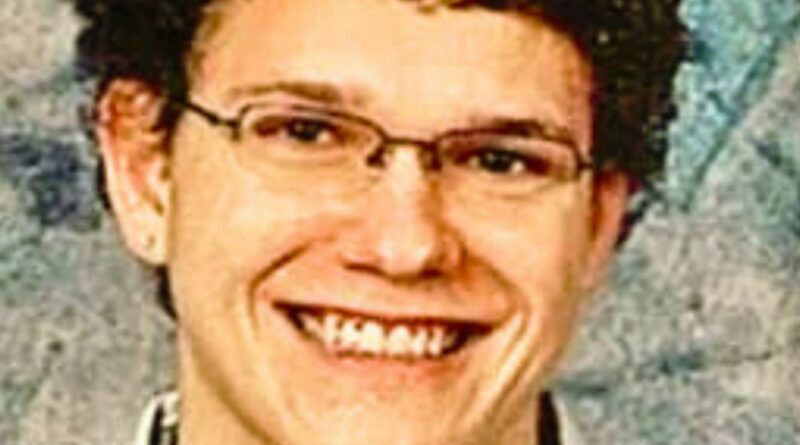Brandon Swanson Disappeared Near Taunton Minnesota
On the night of May 13, 2008, Brandon Swanson was a typical 19-year-old — thoughtful, responsible, and enjoying the freedom of post-finals celebration. A student at Minnesota West Community and Technical College in Canby, he had just wrapped up his final semester. To mark the occasion, he attended a series of low-key get-togethers with friends in the area, laughing, catching up, and winding down from the school year.
By all accounts, Brandon was in good spirits that night. He wasn’t heavily drinking. He wasn’t arguing. Nothing was out of the ordinary — until it was.
Sometime around midnight, Brandon got in his green Chevy Lumina and headed home to Marshall, Minnesota — about a 30-minute drive southeast of Canby. But somewhere along the way, he made a wrong turn. A rural road became gravel. A gentle dip became a steep ditch. His car slid off the road and became stuck. No damage, no injuries — just an inconvenience on a quiet rural night.
Brandon did what any teenager in trouble might do: he called his parents.
He told them he was okay, just needed a ride. He was certain he’d gone off the road near the small town of Lynd, just a few miles from home. His father, Brian Swanson, got in the car and headed toward the location.
What followed was a 47-minute phone call — calm at first, then tense, then silent — ending with Brandon’s now-infamous final words:
“Oh, shit.”
That’s the last thing anyone ever heard from him.
The Last Phone Call: 47 Minutes of Clues and Confusion
When Brandon Swanson called his parents shortly before 2:00 a.m. on May 14, 2008, he wasn’t panicked — just a bit annoyed. He explained that his car had gone off the road into a ditch, and though he couldn’t drive out, he was unharmed. He believed he was just outside of Lynd, Minnesota, a small town not far from his home in Marshall. It seemed like a minor hiccup at the end of a long day.
Brian Swanson, Brandon’s father, grabbed his keys and headed toward Lynd to pick up his son. Brandon stayed on the phone with him, trying to guide him in using the surroundings he could see: a gravel road, the ditch, a field, and some lights in the distance. Meanwhile, Brian and his wife, Annette, tried to find the location using the clues Brandon described — but it didn’t add up.
The Swansons flashed their car headlights. Brandon said he couldn’t see them. Brandon flashed his own lights. His parents saw nothing.
They continued this frustrating back-and-forth for nearly half an hour, both parties growing more exasperated. Brandon was confident he was near Lynd. His parents were confident they were, too. Yet somehow, they weren’t in the same place.
Eventually, Brandon told his dad he would walk toward the lights he believed were from Lynd. He left the car behind and began walking along what he described as a gravel road, maintaining the phone call with his father as he went.
The conversation remained mostly casual — even calm — for a while. Brandon talked about the route, commented on how he thought he was getting closer, and reassured his dad that everything was okay. He didn’t express fear. He didn’t mention seeing anyone else. But he did seem disoriented.
Then, at approximately 2:30 a.m., 47 minutes into the call, Brandon abruptly stopped mid-sentence.
His final words?
“Oh, shit.”
And then — silence.
The call ended. No noise. No click. No scream. No sound of a fall. Just a sudden dead line, and a wave of confusion that turned to panic.
Brian tried calling back. No answer. Multiple attempts. No ringing. No voicemail. The phone had either died, been turned off, or destroyed.
It was the beginning of a search — not just for Brandon, but for meaning behind that final word.
Was it fear? Was it surprise? Did he fall? Was someone else there?
To this day, no one knows for sure.
The Search Begins: The Wrong Town, the Right Car, and a Vanishing Trail
After Brandon’s phone cut out, his parents were left in limbo. They searched the roads near Lynd for hours, retracing every possible path, yelling his name into the night. But as dawn broke and there was still no sign of their son, a cold dread began to sink in.
They contacted the Lyon County Sheriff’s Department around 6:30 a.m., reporting Brandon missing. But instead of launching an immediate search, officers reportedly treated the situation as a common case of a teenager blowing off steam. They told the Swansons that it was Brandon’s “right to be missing.”
That moment of hesitation would prove costly.
It wasn’t until later that day that authorities began a proper search. And when they did, they made a startling discovery: Brandon hadn’t been near Lynd at all. He was more than 20 miles away, near the town of Taunton, Minnesota, a tiny farming community surrounded by open land, ditches, fields, and the Yellow Medicine River.
His car — a green 2001 Chevy Lumina — was found abandoned on a remote gravel road. The car showed no signs of damage, no evidence of foul play. The keys were missing, but the doors were unlocked. It was positioned neatly off the road, as though he had calmly pulled over rather than crashed.
So how did Brandon end up so far from where he thought he was?
Most likely, he was confused about his location, possibly due to the dark rural roads and poor visibility. He was known to have partial blindness in one eye, which may have affected his depth perception or spatial awareness. But even with that in mind, the distance between where he said he was and where he actually ended up only deepened the mystery.
Now that they had a real starting point, search teams mobilized. Police, volunteers, tracking dogs, helicopters, and even boats scoured the area around the car. A K-9 unit traced Brandon’s scent along the gravel road, through fields, and toward the Yellow Medicine River. The dogs indicated that he may have entered the water, but they didn’t track him coming out.
That clue raised immediate fears: had Brandon fallen into the river in the dark? Was that what prompted his final exclamation — “Oh, shit”?
But when divers combed the river, they found nothing. No clothes. No wallet. No phone. No body. Just flowing water and silence.
In the days and weeks that followed, search teams expanded the radius, conducted aerial surveys, drained creeks, and walked miles of farmland. Still, there was no sign of Brandon — not even a footprint, a thread of clothing, or a dropped item.
It was as though he had vanished into thin air.
A Family’s Agony and a Law Born From Heartbreak
For the Swanson family, Brandon’s disappearance wasn’t just a devastating personal loss — it exposed a systemic failure in how authorities handle adult missing persons cases.
When Brian and Annette Swanson called the police the morning after Brandon vanished, they expected urgency. Their son had disappeared mid-call. He’d cried out suddenly and gone silent. His car was abandoned on a dark gravel road. It was clearly out of character — and dangerous.
But the initial response from law enforcement didn’t match the gravity of the situation.
Because Brandon was over 18, police insisted he had the “right to be missing.” In their eyes, he was legally an adult, possibly just laying low or blowing off steam. There was no immediate evidence of foul play. No confirmed crime. Just a silent phone and a worried family.
That stance delayed the official search — and possibly cost valuable time.
The Swansons were stunned. And furious. But they didn’t stop. They pushed. They searched on their own. They went public. And then they turned their frustration into legislative action.
Working with Minnesota lawmakers, the family advocated for what would become “Brandon’s Law.” The bill aimed to ensure that missing adults — not just minors — receive immediate police attention when reported under suspicious or dangerous circumstances.
Brandon’s Law passed in 2009, just a year after his disappearance. It requires that law enforcement take a missing person’s report without delay and begin an investigation when there is evidence of danger, regardless of age. It also mandates coordination between agencies and communication with families.
For the Swansons, the law was a bittersweet victory. It didn’t bring Brandon back. But it meant that other families wouldn’t face the same helplessness they had in those first critical hours.
The law has since helped numerous families across Minnesota — and inspired similar legislation in other states. It stands as one of the most significant legacies born from a cold case — proof that even in tragedy, change is possible.
Yet, despite the law and the awareness Brandon’s story has raised, his case remains open. His family continues to search for answers, refusing to give up. They hold community events. They maintain contact with investigators. They walk the fields. They wait for the phone call.
They wait for Brandon.
Theories and What Might Have Happened That Night
In the absence of answers, speculation has flourished. Over the years, Brandon Swanson’s disappearance has sparked countless discussions, deep dives, and investigative analyses. Everyone from police officers to Reddit sleuths has tried to piece together what might have happened during those 47 final minutes — and beyond.
Here are the most widely considered theories:
He Fell Into the Yellow Medicine River
This is the theory law enforcement leaned toward early on. Tracking dogs traced Brandon’s scent from his car to the edge of the Yellow Medicine River, where it disappeared. If he had fallen into the river in the dark — startled by uneven footing, loose rocks, or thick brush — it could explain his final word: “Oh, shit.”
The river was at flood stage that night, due to spring rains. If Brandon fell in and drowned, it’s possible his body was swept downstream or tangled in debris. But extensive searches — including divers, sonar, and aerial drones — have yielded nothing.
Skeptics argue that some sign of his belongings should’ve surfaced by now. A shoe. A phone. A wallet. Anything. But the river has kept its secrets.
He Died from Exposure or Injury
Another theory suggests Brandon may have become disoriented after his phone died or was lost. If he wandered further into the fields, he might have tripped, fallen, or suffered a medical event — like hypothermia or a concussion — and succumbed to the elements.
Temperatures that night dropped into the 40s. Not fatal on their own, but combined with exhaustion and wet conditions, they could have created a dangerous situation.
Supporters of this theory point to the remote terrain: farms, drainage ditches, abandoned silos, and open wells dot the landscape. One misstep could mean a fall into a hidden hazard, effectively erasing any trace of him.
Still, dozens of these features have been checked and cleared.
He Was Picked Up — or Met With Foul Play
Brandon was walking alone in the early morning darkness. While his call didn’t mention seeing anyone else, there’s a slim chance he may have encountered another person — someone offering a ride… or something more sinister.
Could a passing driver have picked him up with ill intentions? Could a local, spotting someone they didn’t recognize, have confronted him?
Supporters of this theory point to the abrupt end of the call — the shock in his voice. They wonder if someone had been nearby, silently approaching. But again, no evidence — no tire tracks, no witnesses, no tips — has ever surfaced to suggest foul play.
He Ran Away?
Some have floated the idea that Brandon simply decided to vanish — to escape or fake his own death. But this theory is widely dismissed by those who knew him. He was close with his family. He was making plans for the summer. He was minutes from home. And the idea that someone would engineer such an elaborate exit — down to calling their father for help and walking alone at night through fields — defies logic.
Nothing in Brandon’s behavior indicated he wanted to disappear. He was a kid who needed a ride — not someone running from his life.
Legacy, Advocacy, and the Haunting Echo of a Voice
Brandon Swanson has become more than a missing person. His name is a symbol — of lost potential, of systemic gaps in emergency response, and of the invisible weight that families carry when answers never come.
His disappearance struck a chord that went far beyond his small Minnesota community. It sparked national discussions about how law enforcement handles missing adults. It challenged the assumptions we make about age, autonomy, and urgency. And it introduced the world to a family that has refused — year after year — to let the silence win.
A Mother’s Grief, A Father’s Drive
Brian and Annette Swanson have carried themselves with dignity and resilience. Their heartbreak has never hardened them. Instead, they’ve turned their pain into purpose — advocating for others, keeping Brandon’s memory alive, and reminding the public that cold cases are not forgotten cases.
They speak at events. They sit for interviews. They work with families going through similar losses. They light candles every year on May 14th, marking the day their son’s voice vanished into static.
For them, that final word — “Oh, shit” — isn’t just a mystery. It’s a moment frozen in time. A flash of panic. A clue. A wound that never closes.
Brandon’s Law in Action
The law named after Brandon has already saved lives. Because of it, police departments across Minnesota are trained to act immediately when adults go missing under suspicious or dangerous circumstances. Dozens of searches that would have been delayed have instead launched without hesitation. Families that might have been dismissed have been heard. The law works.
It has also inspired advocates in other states to push for similar reforms. Brandon’s case is often cited in national discussions about the classification of missing persons and the need for urgency, regardless of age.
The Online Community and Ongoing Interest
In the digital age, Brandon’s story has found new life through forums, podcasts, documentaries, and online true crime communities. Reddit threads dissect every detail. Podcasts replay the timeline. YouTubers walk through the geography on Google Earth. Some of these efforts are amateur; others are profoundly researched.
But all of them share one thing in common: they want the truth.
The theory threads, the virtual maps, the FOIA requests — they’re all born from the belief that someone, somewhere, knows something. That a resolution is still possible. That the right eyes, the right moment, the right clue could bring Brandon home.
Conclusion
Brandon Swanson disappeared without a trace — but his voice has never stopped echoing.
In the quiet fields near Taunton, Minnesota, his last known footsteps faded into darkness. But what he left behind was something far more enduring than footprints: a legacy of change, a community bonded by sorrow and hope, and a reminder that one person’s story can ripple outward to touch lives far beyond what they ever imagined.
We still don’t know what happened that night. The fields have been searched. The rivers combed. The maps analyzed. The theories debated. And yet, Brandon remains missing. His family continues to hold out hope — not just for recovery, but for answers. For truth. For peace.
Until then, his story continues to matter. It continues to protect others through Brandon’s Law. It continues to inspire action. And it continues to remind us that behind every missing person’s photo is a family, a future, and a voice that deserves to be heard.
Brandon Swanson was — and is — deeply loved. And the search for him will never truly end.
Discover more from City Towner
Subscribe to get the latest posts sent to your email.




